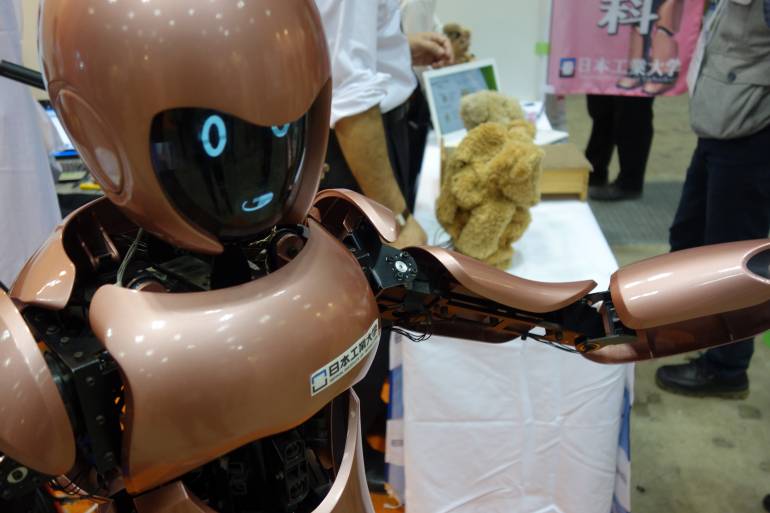Move to Tokyo, become a coding czar and change your life forever—it’s a pie-in-the-sky dream, right? Not when you put Code Chrysalis into the mix.

Needing nothing but a laptop, software engineers can work remotely, develop apps and earn six-figure salaries—so it’s no surprise it’s becoming one of the fastest growing industries with around 23 million workers worldwide. What makes it most attractive, however, is its accessibility. While plenty of developers studied and gained degrees in the field, the potential for a self-taught route is surprisingly common. With countless online guides and role models like Steve Wozniak and Margaret Hamilton to inspire you, it could be that easy. For most, something of an in-between is needed: not quite going back to university, not quite working out of a garage for five years. Enter bootcamps.
A relatively recent phenomenon, coding bootcamps have taken millennials by storm, tempting the middle generation who learned on dial-up but missed out on high school coding classes. Popular with Gen X and Gen Z too of course, they offer a short cut to the coding life, but are by no means easy. One of the most competitive options in Tokyo, Code Chrysalis offers to turn you into a software engineer in three months. The bootcamp is growing and has impressive success rates—so we sat down with co-founder Yan Fan to find out how it started, how it works and whether it really is too good to be true.
Yan: From Singapore to Silicon Valley

A product of bootcamp transformation herself, Yan went from a finance career in Singapore to coding in Silicon Valley, all within a year. “I was teaching myself to code in cafes in Tokyo, ready for this course. Whenever I would tell people, especially people working in tech, what I was doing, they would be a little incredulous and say it was a really difficult thing to do,” she remembers. Undaunted, her hard work paid off and Yan found herself teaching with the bootcamp after graduating, alongside a full-time software engineer role in the Valley.
Code Chrysalis – Why Japan?

“We associate Japan with being so technologically advanced, but there’s a real skills gap when it comes to software engineers,” Yan explains, “Traditionally, software engineers are seen as low-skilled and low-paid blue-collar workers, but at the same time there’s a resurgence of jobs where engineers are needed for high-level work, but companies just can’t find people to fill the roles.”
With nearly 45% of their students coming from Japan, Code Chrysalis are keen to facilitate that change from within. “We’re here to change the way Japan creates software and develops software engineers,” she emphasises—and it seems like it’s working. As much a course for those looking to start a new career, it has drawn in those wishing to make a bigger impact in their own.
The course

Big changes require big sacrifices, and the Code Chrysalis courses are no different. While the beginners course is taken on a part-time basis, the immersive three-month course is an intense commitment. With classes from 9 am–6 pm, additional homework and a full two-months of pre-course study before it even begins, it is only for the dedicated—with entry requirements designed to test this. “We do a lot of screening,” Yan says, “We want our students to be serious because we’re serious.”
While even submitting an application requires a coding challenge, she insists it is still beginner friendly: “It’s totally possible for people with no knowledge of coding to study and get in—we just want to see that drive, that commitment.”
If applicants pass the coding test, they reach an interview stage, which is used to further assess their skills, but also their personality. “We have a ‘no assholes’ policy for sure,” Yan says, only half-joking. “We’re looking for ambitious and driven people who are also pleasant to be around, even when everything is falling apart around them.”
Accepting only around 20% of applicants, the team has stuck to its guns when it comes to admissions, which Yan is confident has paid off. “From the start we were adamant we didn’t want to fill our classes by lowering standards and it’s worked. People are realizing what it means to be a good software engineer, what we’re trying to do. We really hope that people hold themselves to higher standards, that they will dream a little bit bigger than they have been.”
For lasting success, however, software engineers need more than just coding skills, Yan explains. Communication, female empowerment and community building are all at the forefront of the Code Chrysalis ethos. “We focus a lot on soft skills as well as technical; a lot of communication, teamwork, how to have difficult conversations.”
The course structure

Pre-course: The students undertake two months of remote self-study following the pre-course guide. Projects and assignments are submitted on topics like JavaScript, Git, basic data structures, HTML, CSS and recursion. Students must pass two assessments during this to continue.
Bootcamp: Over the three-month course students learn about computer science and programming concepts, explore backend and frontend, build small apps to explore libraries and frameworks and move onto fullstack projects. Deployment pipelines, product management and engineering teamwork are also addressed as the course moves towards career-focused goals. During the bootcamp students work on a series of projects in multiple languages including a capstone project with a three-week timeline and a one-week polyglottal project to test adaptability. They are also required to deliver a public tech talk on any topic of their choosing with the graduation evening offering a chance for all students to present their work and development.
The graduates

Watching the graduation presentations of the latest cohort, the possibilities are impressive. From VR explorations of Facebook data to travel-focused creations and fortune telling apps that base predictions on facial expressions—the complex projects are a sure sign of the school’s success, not to mention the variety of both skills and participants. With a ballet dancer, English teacher and software developer, among others, the course is a melting pot of experience and learning opportunities.
With graduates working at Google, Playstation and Quoin, to name a few, the return on investment is strong. “We have more companies asking to hire than we have graduates—so while we don’t give guarantees, the odds are pretty good.” Offering support with CVs, interviews and vetting potential employers, the Chrysalis team continue to support their graduates well after the course ends, helping negotiate job offers as its graduates progress up their new career ladders.
Inclusivity: Scholarships and sustainable changes

Already a male-dominated field in general, the software engineering community in Japan suffers from even more disparity: “In general, women are underpaid, and have fewer opportunities to attend courses like ours—it’s important to not only recognize that disparity but actively try to reduce it,” Yan notes. Working with local companies, Chrysalis offer scholarships for women and LGBTQ students, with a no strings attached promise. “A lot of companies want to improve diversity, but struggle to find people. We have to increase the pool, not just shuffle it around between companies.” With companies like Toyota and now Yamaneko offering fully paid spots, the team is optimistic. “We really hope other companies can look at this and ask themselves if they are doing as much as they can—are they going to put their money where their mouth is?”
While encouraging women into the field is one thing, Yan has come to understand the importance of supportive communities for sustainable progress. Together with colleague Mary, she developed a list of the different women-led tech events in Tokyo. “When I was here in 2014, there were so few groups, now there are far more, all pushing for women to succeed in tech.”
Tips for tech starters in Japan

Keen to encourage anyone starting a career in Japan, Yan’s advice was simple: “Be picky. Be very, very picky.” Unfortunately, she says, it’s easy to get a badly paid and uninspiring dev job in the city, but people should hold out for a position that fosters creativity and encourages actual development. “We always tell our students to aim for the companies that are hardest to get into,” she laughs—and with Code Chrysalis’s hiring records, it seems like good advice to take.






























